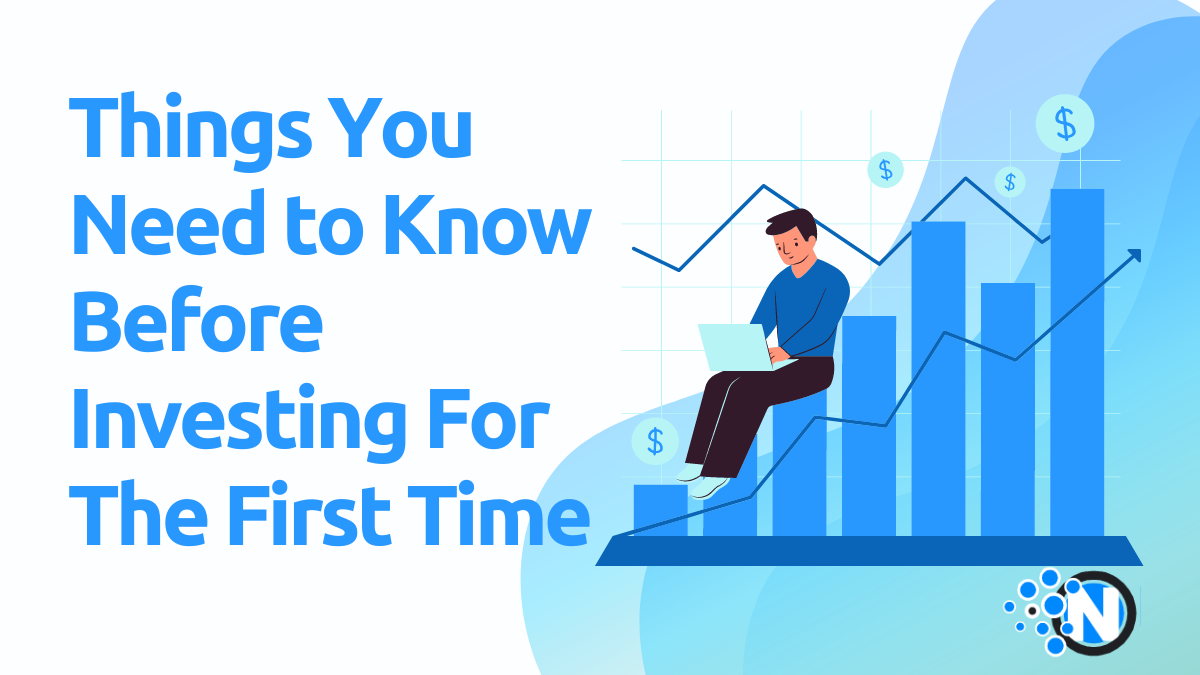7 Things You Need to Know Before Investing For The First Time

There is no getting around the fact that the rise of online trading platforms has profoundly changed the financial services industry.
In a few short years, the trading and investment sector has been transformed from something relatively closed off to the average person to an industry where individual investors can set up an account and trade the markets in real-time within a matter of minutes.
This transition has introduced a whole new generation of investors to the financial markets. It has empowered millions of individuals worldwide to take direct control of their financial future.
Evidently, this shift towards embracing retail investors has been paying off. According to recent reports, the global online investment market was valued at $1.88bn in 2021 and is estimated to grow by around 14% between 2022 and 2030.
With this shift towards retail investors, more individuals are getting started for the first time than ever. And for many users trying out online trading platforms, this might be their first time ever dipping their toes into the trading and investment space.
If you are one of these novice traders just setting up an account for the first time or making your first investment, what are some things you need to know before investing?
Balance is Everything
When setting up their first portfolio, novice investors need to remember that balance is everything.
A balanced portfolio is important, as it indicates that your risk is relatively well diversified across a range of different sectors, industries and asset classes. This makes you better able to withstand any potential downturn in the market.
In an ideal world, a well-balanced portfolio will consist of various asset classes, including everything from individual stocks to savings bonds. Although the potential returns on your investment will vary across these asset classes, they will help to balance out your risk exposure. Savings bonds and other types of bonds are useful for this, as they tend to be relatively low risk when compared to stocks.
Start Small and Diversify
When investing for the first time, starting small and diversifying your investments is best. Diversification means spreading your investments across different asset classes, such as stocks, bonds, and real estate. This can help reduce your overall risk and increase your chances of success.
Starting small can also help you learn the ropes of investing without risking too much of your money. You can gradually increase your investments as you become more comfortable and confident in your investment strategy.
Dollar Cost Averaging Beats Trying To Time The Market
Another important principle rookie investors should try to abide by is the idea that dollar cost averaging your way into the market will generally be better than trying to time it.
Investors who attempt to time the market will try to wait for the perfect time to invest, in order to maximize their profits. However, this is very much easier said than done and requires a high level of understanding and experience.
A better approach for novices is to follow the principle of dollar cost averaging, which sees investors making smaller, more regular investments over a longer period of time. While you will buy into the market at various prices, you will be exposed to less drastic price fluctuations. In the long run, this will decrease your exposure to risk.
Stick to Index Funds
If you are still relatively early on in your investment hour, a time-tested approach is to stick to index funds rather than trying to choose individual stocks.
Picking the right stock to invest in requires a relatively high level of knowledge, experience and familiarity with the company in question. For most novice traders, this is something they haven’t developed yet.
In contrast, investing in an index fund spreads your investment across a number of different companies. This has the effect of immediately diversifying your portfolio while you also benefit from returns on your investment that match the performance of the stock market as a whole.

Think Long Term
Another important mindset to adopt when developing your investment portfolio is to think long term rather than short term.
Short-term trading is considerably risky and more unpredictable than long-term investing and requires a high degree of knowledge about how the market will perform. This approach is better suited to day traders, who are fully committed to trading as part of their day job.
In contrast, a longer-term trading strategy hopes to benefit from the ebb and flow of the market over an extended period, which tends to produce more consistent gains. Long-term investment is also more cost-effective, as you will generally pay less in transaction fees. It also gives your investments more time to mature and accrue gains.
Know your Risk Profile
Investing is an inherently risky activity, after all, if guaranteed a profit, everyone would be doing it.
Despite being an unpredictable activity, many traders getting started for the first time are often not aware of what the risks mean for them personally. Because of this, they open themselves up to more danger by not understanding what level of risk they should be willing to accept when they make an investment.
The starting point for anyone creating an investment portfolio is to establish what level of risk they are willing to expose themselves to. This will vary depending on a number of different factors, such as their age, the amount they have to invest and their level of experience. An understanding of your own personal risk profile should be the principle that guides your investment choices and the development of your trading portfolio.
Educate Yourself
Investing requires a basic understanding of finance and economics. Before investing, it’s essential to educate yourself on these topics. You can read books, attend seminars or webinars, and seek advice from financial professionals.
Investing also requires a solid understanding of the investment options available to you. Learn about stocks, bonds, mutual funds, ETFs, and other investment vehicles. Understand the risks and potential rewards of each investment option.
Conclusion
Investing for the first time can be a rewarding experience, but it’s essential to understand your goals, risk tolerance, and investment options before getting started. By starting small, diversifying your investments, educating yourself, being patient, and staying the course, you can build wealth and achieve financial security over the long term.




